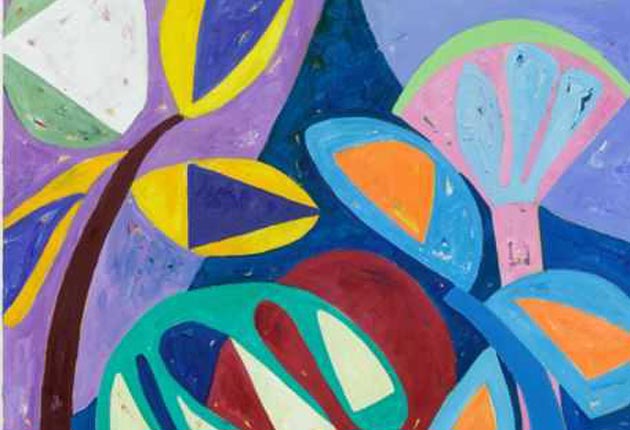Gillian Ayres at 80: New Paintings and Works on Paper, Alan Cristea Gallery, London
A sensational second flowering

Your support helps us to tell the story
From reproductive rights to climate change to Big Tech, The Independent is on the ground when the story is developing. Whether it's investigating the financials of Elon Musk's pro-Trump PAC or producing our latest documentary, 'The A Word', which shines a light on the American women fighting for reproductive rights, we know how important it is to parse out the facts from the messaging.
At such a critical moment in US history, we need reporters on the ground. Your donation allows us to keep sending journalists to speak to both sides of the story.
The Independent is trusted by Americans across the entire political spectrum. And unlike many other quality news outlets, we choose not to lock Americans out of our reporting and analysis with paywalls. We believe quality journalism should be available to everyone, paid for by those who can afford it.
Your support makes all the difference.Late flowerings – that rage against the imminent dying of the light – are not especially unusual. Titian painted into his 80s; W B Yeats, late in his 70s, wrote, in the final stanza of a late, great poem, of nymphs and satyrs boisterously copulating in the foam. John Cowper Powys wrote the finest of his novels during his 70s. Call it, if you like, a kind of manic exuberance before the shutters come down.
And so it is with Gillian Ayres, who suffered a terrible loss when many of her paintings of the 1980s were consumed in the Momart warehouse fire in east London five years ago. It took her a long time to recover from what must have felt like a species of bereavement. Paintings, unlike poems, cannot be replicated. But now she is back, with a show which fills two large gallery spaces on Cork Street, and leaves you feeling almost giddy with pleasure.
Abstract painting is not much of a muchness, though many who are not especially over-fond of it are inclined to think so. It comes in many varieties, though, in essence, the kinds boil down to two: the austere and the not-so-austere. There is the abstraction which looks to geometry as the ground of its being. It feels austere, severe, as if, finally, it is the distillation of something neatly cerebral. It barely notices that it has been born out in a world of sweat and tears and fleshiness. The Constructivists were such artists. We don't cry for joy when we see their work. We don't readily embrace it as if we had reached harvest home. We stand back, rub our chins, and immensely admire it.
And then there are the abstract painters who are most of all in love with the tangibility of the world they observe and encounter every day of their lives. Their paintings are about a sudden, almost brutish, coming up against the world, day after day. They make a kind of rich brew of all the world's manifold ingredients – its sights, its sounds, its colours – and then they serve it up for our delectation. Ayres is this kind of an abstract painter.
Ayres doesn't give titles to her paintings. She leaves that to her friends. Extract a few words, almost at random from these titles, and you have captured the mood of the work: flight, sparks, song, jumping, flying, shouts. The paintings are full of gorgeous colour and movement, swoopings, turnings, gliding, pirouettings. There are flame-like torsions. Movements feel arrested in full flight. They remind us in their crisply edged forms of the natural world – glancingly, you might say. A hint of a moon or a fan or a starfish or a jellyfish. For the most part, colours tend not to overlap or to merge. Patches of colour are discretely defined. Each colour feels like a strident statement of intent. Many of the paintings are grounded in a nocturnal blue, but it is a blue of cheerful, questing reverie, not a Munch-like blue of gloom and anxiety. Two forms are often set in juxtaposition – the upright, flower-like chalice on a stem, and a more yielding, limp, leaf-like presence beside it.
The title of one painting in particular, The Seeds that Woke the Clay, seems to best sum things up. That title has an almost biblical resonance, and the work too feels biblical in its distant roots. The forms seem to be erupting into a new kind of life, the kind of life which only this painting, this moment of worming, squirming witness, has managed to define. And here you have it again, in the shapes, a thrusting up into life, and a wilting, a dying-away, the two side by side, as if the artist is saying: this is the whole human gamut, like it or not. This is all there is. And, my God, it's more than enough.
To 13 March (020 7439 1866)
Join our commenting forum
Join thought-provoking conversations, follow other Independent readers and see their replies
Comments